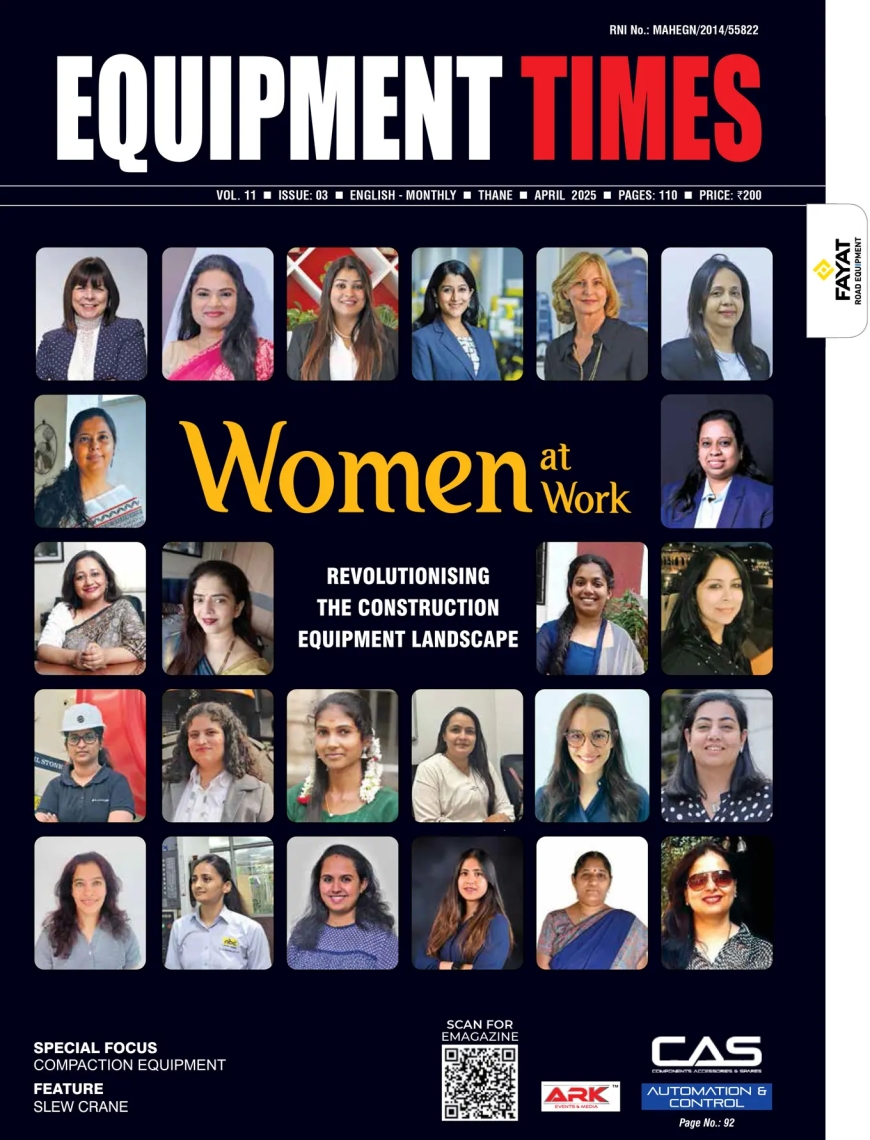We are dedicated to upholding our high standards without compromising on quality.
Subhajit Chandra, Divisional Head Mobile Crane Division Liebherr India As we are seeing a shift of momentum in the industry. How do you see the next 5 years for the industry as well as for Liebherr? In our

As we are seeing a shift of momentum in the industry. How do you see the next 5 years for the industry as well as for Liebherr?
In our industry, all eyes are on India, especially with the booming infrastructure growth. We anticipate a consistent 20-25% annual growth, particularly in the construction equipment sector, making it an incredibly promising period not just in the next three to four years but, I dare say, for the next decade. The stability in our economic and political landscape plays a pivotal role in fostering such an environment.
Liebherr has actively contributed to this growth story in India, playing a part in the nation’s development by supplying our top-notch cranes to a wide array of sectors, including refineries, fertilizers, chemicals, hydrocarbons, cement, infrastructure, and renewable energy sources like NPCIL. NPCIL remains one of our key clients, and considering the government’s plans to introduce reactors over the next fifteen years, we anticipate increased opportunities to provide superior crane solutions.
Speaking on competition, we embrace healthy competition as it fosters growth and innovation. However, it’s essential that the hiring rates for German cranes remain competitive without compromising quality in comparison to other manufacturers. I urge all burgeoning hiring companies to consider investing in premium quality cranes. In a diversified market, offering models from various manufacturers, including German-made ones, can cater to different needs. Balancing this with competitive rental pricing ensures not just affordability but also profitable returns for all stakeholders involved.
When it comes to Cranes, safety is a major concern. What are the major safety features incorporated in your machines?
Our cranes have been meticulously designed, manufactured, and rigorously tested in strict adherence to the EN13000 standard. This standard stands as a benchmark recognized and adopted by major developed nations such as the US, various European countries, and Australia. EN13000 comprehensively outlines the design specifications, manufacturing requirements, and critical safety guidelines crucial for crane operations. However, one of the significant challenges faced in India pertains to the absence of strict adherence to such standards. While standards do exist, their implementation lacks a regulated format, leading to inconsistencies in compliance.
Since you mentioned cost factor, India is a very cost-centric market. How do you think you are able to manage between cost and quality features that you have added to your machines?
We’re dedicated to upholding our high standards without compromising on quality. Our prices remain competitive, mirroring market standards wherever we operate. These prices sustain our presence in the market, appealing to our loyal niche customers who value our commitment. We’re here to stay, growing alongside our steadfast customer base.
How do you manage scalability compared to demand that is there in the market for your machines?
At our company, our operational blueprint extends at least a year into the future through our production plan. We rely on market forecasts to anticipate upcoming demands, a crucial step in our approach at Liebherr in India. Our process heavily involves pre-sales, aiming to unearth requirements from their foundational elements: pin-pointing the specific need, understanding the application context, and determining the deployment area. We engage directly with end-users to comprehend their needs thoroughly, facilitating the formulation of precise requirements. These discussions also pave the way for budgetary approvals. Simultaneously, we estimate the timeframe within which these requirements will materialize. By gauging when the need will arise, we communicate forecasts to our manufacturing facility, allowing ample time for production. For instance, if we anticipate the necessity for a certain crane size in the second quarter of 2024, we initiate its production accordingly. This methodical approach forms the bedrock of our delivery planning process.
What are the growth priorities that Liebherr has for India in the coming 5 – 10 years?
We have a dual approach to the market. Firstly, by showcasing our newest crane models in our portfolio. Secondly, we actively engage in the used crane sector, which remains a significant market in India. Despite efforts to regulate this market, the demand for used cranes, particularly those from Germany, remains substantial in India. To meet this demand, we specialize in refurbishing cranes sourced from various parts of Europe, especially those already well-maintained, and bring them to India. We’ve expanded our operations to refurbish cranes within the country as well. Our strategy involves acquiring these cranes from Europe, refurbishing them to high standards, and then offering them for sale in India. This comprehensive approach allows us to cater to both new and existing market demands effectively.
Hits: 6








